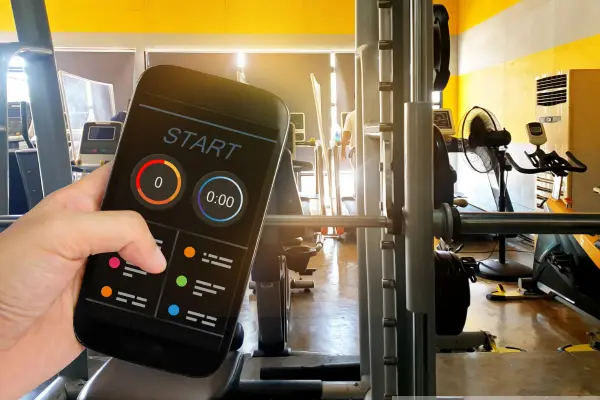Table of Contents
Introduction: Maximizing Your Home Workout Experience
When it comes to staying fit without leaving the house, no-equipment workouts are a game-changer. Many people find it challenging to maintain a fitness routine, especially when they lack access to a gym or fitness equipment. Fortunately, you don’t need a fancy setup to achieve an effective workout. With just your body weight and a bit of creativity, you can perform a variety of exercises that target different muscle groups, improve cardiovascular health, and enhance overall well-being. By incorporating these at-home workouts into your routine, you can achieve your fitness goals and enjoy the convenience of working out in your own space.
Bodyweight Exercises: The Foundation of At-Home Workouts
Bodyweight exercises form the cornerstone of at-home workouts. These exercises are not only convenient but also highly effective. Push-ups, squats, lunges, and planks are excellent examples of bodyweight exercises that require no equipment but deliver significant results.
- Push-ups: Great for chest, shoulders, and triceps.
- Squats: Target the quads, hamstrings, and glutes.
- Lunges: Strengthen the legs and improve balance.
- Planks: Engage the core and stabilize the spine.
These exercises can be modified to match different fitness levels. For instance, knee push-ups are a good option for beginners, while advanced practitioners can try clapping push-ups. Similarly, adding variations to squats, like jump squats, can increase intensity and challenge your muscles further. By performing these exercises in a circuit or combining them with high-intensity interval training (HIIT), you can enhance both strength and cardiovascular fitness.
High-Intensity Interval Training (HIIT): A Power-Packed Approach
High-Intensity Interval Training (HIIT) is a dynamic and effective workout strategy that involves short bursts of intense exercise followed by brief rest periods. This approach boosts metabolism, burns calories, and improves cardiovascular health in a relatively short amount of time. HIIT workouts can be customized to include various exercises such as burpees, mountain climbers, and high knees.
- Burpees: Combine a squat, jump, and push-up for a full-body workout.
- Mountain Climbers: Provide a cardio boost while engaging the core.
- High Knees: Enhance cardiovascular endurance and leg strength.
Incorporating HIIT into your home workout routine is straightforward. You can design a HIIT session with exercises like jumping jacks, squat jumps, and running in place. Aim for 20-30 seconds of intense activity followed by 10-15 seconds of rest. Repeat this cycle for 15-20 minutes for an effective workout that maximizes calorie burn and improves overall fitness.
Core Strengthening Exercises: Building a Strong Foundation
A strong core is essential for overall fitness and daily function. Core-strengthening exercises target the muscles around your abdomen, lower back, and pelvis. These exercises improve stability, posture, and balance, and can be performed without any equipment.
- Crunches: Focus on the upper abs.
- Leg Raises: Target the lower abs.
- Russian Twists: Engage the obliques.
Performing core exercises regularly helps support your spine and reduces the risk of injury. For a balanced core workout, include exercises that target different areas of the abdominal muscles. A routine might consist of several sets of crunches, leg raises, and Russian twists. To increase difficulty, consider adding variations like bicycle crunches or flutter kicks.
Flexibility and Mobility: Enhancing Range of Motion
Flexibility and mobility exercises are vital for maintaining joint health and preventing injuries. Stretching and mobility routines help improve your range of motion, enhance muscle recovery, and reduce muscle soreness.
- Dynamic Stretching: Prepares the body for exercise by warming up muscles and increasing blood flow.
- Static Stretching: Involves holding stretches for a longer period to increase flexibility.
- Foam Rolling: Helps with muscle recovery and reduces soreness.
Incorporate a mix of dynamic and static stretches into your workout routine. For example, dynamic stretching like leg swings and arm circles can be done before your workout, while static stretches such as hamstring stretches and shoulder stretches are great for post-workout recovery. Regularly practicing flexibility exercises can lead to improved performance in other physical activities and contribute to overall well-being.
Conclusion: Tailoring Your At-Home Workout Routine
Creating a successful at-home workout routine involves understanding your fitness goals and selecting exercises that align with those objectives. Whether you are looking to build strength, improve cardiovascular fitness, or enhance flexibility, there are numerous no-equipment workouts that can be done in the comfort of your home. By integrating bodyweight exercises, HIIT, core strengthening, and flexibility routines into your schedule, you can achieve a comprehensive fitness regimen without the need for expensive equipment or a gym membership. Remember to listen to your body, start gradually, and adjust your routine as needed to ensure continuous progress and avoid injury.










